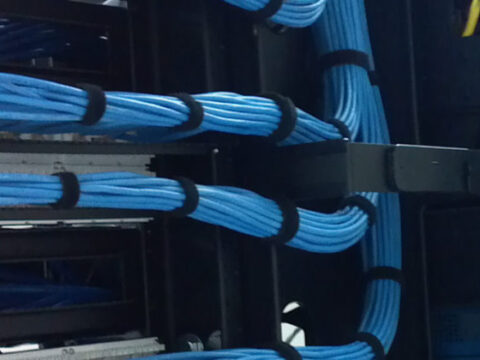5 things to know about network cabling
Network cabling is a critical component of any modern information technology infrastructure. ISI Technology can aid you with network cabling in and around Littleton, Colorado Springs, Denver, Boulder, Cheyenne, Englewood, CO.
 Here are five important things to know about network cabling:
Here are five important things to know about network cabling:
- Types of Cables:
Network cabling comes in various types, and the choice of cable depends on the specific requirements of your network. The most common types of network cables include:
Ethernet cables (Cat5e, Cat6, Cat6a, Cat7, Cat8): Used for wired Ethernet connections, with higher categories supporting faster data transmission speeds.
Fiber optic cables: Transmit data using light signals, offering high bandwidth and long-distance capabilities.
Coaxial cables: Commonly used for cable TV and broadband internet connections.
- Cable Standards:
Network cables adhere to industry standards to ensure compatibility and performance. The most recognized standard for Ethernet cables is the TIA/EIA (Telecommunications Industry Association/Electronic Industries Alliance) standard. For example, Cat5e, Cat6, and Cat6a are standards that define the performance characteristics of Ethernet cables.
- Cable Installation:
Proper installation is crucial for network cabling to function optimally. Some key considerations for installation include:
Avoiding sharp bends, kinks, or twists in the cable, as these can degrade signal quality.
Using cable management tools like cable trays, raceways, and cable ties to organize and protect cables.
Adhering to safety guidelines when running cables through walls, ceilings, or floors to avoid electrical hazards.
- Cable Testing and Certification:
After installation, network cables should be tested and certified to ensure they meet the specified standards and can reliably transmit data. Testing tools like cable testers and certification equipment can verify cable integrity and performance.
- Future-Proofing:
When planning network cabling infrastructure, it’s essential to consider future needs and technologies. Investing in higher-grade cables and allowing for scalability can save time and money in the long run. For example, Cat6 or Cat6a cables are better suited for gigabit and 10-gigabit Ethernet, making them more future-proof compared to older Cat5e cables.
In summary, understanding the types of network cables, adhering to standards, ensuring proper installation, testing and certification, and planning for future needs are essential aspects of network cabling that can help maintain a reliable and efficient network infrastructure. Please call us without any hesitation.











